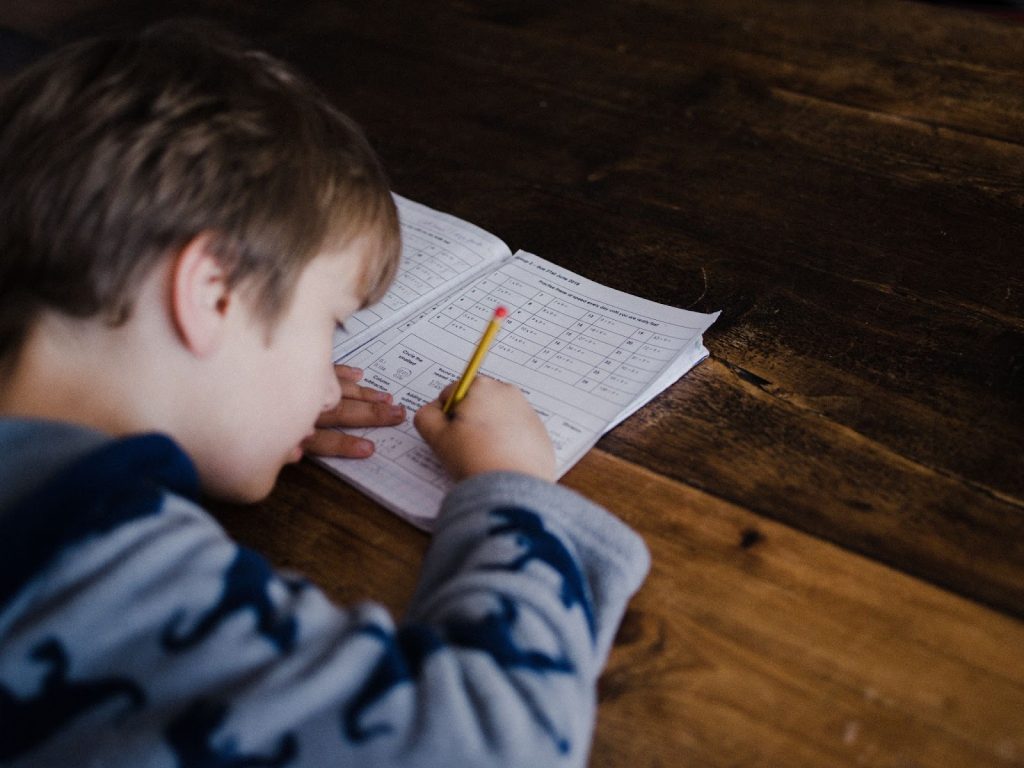Did you know that homeschooling is one of the fastest-growing educational movements in the United States? Around two million American children are homeschooled, which will likely grow in the next 20 years. So maybe even you’re thinking about homeschooling your kids.
Math & ELA | PreK To Grade 5
Kids see fun.
You see real learning outcomes.
Watch your kids fall in love with math & reading through our scientifically designed curriculum.
Parents, try for free Teachers, use for free
Perhaps you’ve just started to explore the idea. Either way, you probably have many questions and maybe some concerns too. This article will answer all your questions and help ease your mind about this big decision.
Homeschooling?! What’s That?
We know that some children are homeschooled, and we might even understand why some parents may choose to do so, but what is homeschooling? Homeschooling is a method of education for children outside of a traditional school setting. It is exactly what it sounds like: school at home. However, homeschooling is not simply sitting your child at the kitchen table with a few textbooks. A good homeschool program involves careful planning and commitment from the parent and the child.
Simply put, homeschooling is a flexible learning format in which parents may choose the curriculum, teaching methods, and educational materials that best fit their child’s needs instead of being bound by the one-size-fits-all approach of public education. Not only does this allow parents to tailor the educational experience to their child’s unique learning style, but it also allows them to instill their values and beliefs into their child’s education.
How Does it Work?

Homeschooling can look very different from family to family because there is no arbitrary or proper way to do it. Some families choose to purchase a curriculum from a company or cooperative.
Others design their curriculum using resources from the library, local museums, and the internet. Some families teach all subjects themselves, while others hire tutors or take classes at the local community college to supplement their child’s education.
The key to successful homeschooling is finding a learning method that works for both the parent and the child. There is no single method that is right for everyone. Families should experiment with different techniques and materials until they find a system that works for them.
Related Reading: Best Tips on Homeschooling for Parents
How Can I Start Homeschooling?
It can feel overwhelming, but it doesn’t have to be. Here are some easy steps to get you started on your journey of how to start homeschooling:
1. Do Some Research
As a parent, educating yourself before deciding to teach your kids at home is important. You should research the different methods, determine your state’s laws, and determine whether you have the time and resources to commit to homeschooling. You can also talk to other families and attend local events to get a feel for what it feels like.
2. Create a Budget
Homeschooling can be done on a tight budget, but it is essential to factor in the cost of curriculum, supplies, and extracurricular activities when creating your budget. You may also want to consider the cost of hiring a tutor or taking classes at the community college. While it can easily be done cost-effectively, ensuring you have the resources you need to give your child a quality education is important.
3. Design a Curriculum
One of the great things about homeschooling is the freedom to design your curriculum. You can choose the textbooks, materials, and methods you feel will work best for your child. If you plan on teaching for more than one year, you may want to create a long-term plan to ensure your child gets a well-rounded education.
Related Reading: Best Teaching Tools for Teachers
What Do You Need to Homeschool Your Kids?

Homeschooling is allowed and approved in all fifty states of the United States and many other nations worldwide. The state regulates homeschooling in the United States; hence, homeschool regulations vary by state. The majority of the states require parents who homeschool their children to
- Notify the school district that they are withdrawing their child from public school.
- Keep records of their child’s educational progress.
- Ensure that their child receives a yearly standardized test or assessment.
- Meet any other state-mandated requirements.
Related Reading: Helpful Homeschooling Resources for Parents
Making a Schedule For Your Homeschool
One of the benefits of homeschooling is that you have the flexibility to design your schedule. However, creating a schedule to keep yourself organized and on track can be helpful. Here are some tips for creating a homeschool schedule:
1. Start with a Master Schedule
A master schedule is a general outline of your homeschool day. It should include time for academics, extracurricular activities, and downtime. Once you have a general overview, you can start filling in the details.
Some families plan their homeschool lessons a week in advance, while others prefer to go with the flow and take each day as it comes. No matter your approach, having a master schedule will help you keep your homeschooling on track.
2. Block Out Time for Each Subject
Even though you have the flexibility to design your homeschool schedule, it is still important to block out time for each subject. This will help ensure that your child gets a well-rounded education and that you cover all the material you need. You can block out time for each subject by using a daily or weekly schedule.
3. Include Time for Extracurricular Activities
Homeschooling doesn’t have to be all work and no play. In fact, it’s important to include time for extracurricular activities in your schedule. This will help your child socialize and stay active. You can include time for extracurricular activities by taking a break from academics for an hour or two each day or planning a field trip weekly.
Homeschooling vs. Public Schooling

There are a lot of factors to consider when deciding whether to homeschool or send your child to public school. Here are some critical differences between homeschools and public schools:
1. Flexibility
In homeschooling, you can design your curriculum, choose your teaching methods, and set your schedule. You must follow the district’s curriculum and teach using their methods in public school. You also have to adhere to the school’s schedule.
2. Cost
You can easily homeschool your child within a budget. You can use free or low-cost resources like online learning materials and library books. You also have the flexibility to choose how much you spend on extracurricular activities. Public school is usually free, but some costs, such as uniforms, school supplies, and field trips, are associated.
3. Socialization
One of the biggest concerns about homeschooling is socialization. However, homeschooled kids can still socialize through extracurricular activities, such as participating in sports, joining Scouts, or through 4-H. They can also socialize with kids in their neighborhood or community. In public school, kids tend to stay with the same group of kids all day long.
Is Homeschool a Better Choice?
There are many reasons homeschooling is better than public schooling. Here are some of the most common ones:
- Homeschool allows for a more customized education. Each child can learn at their own pace and focus on the subjects most interesting.
- There is no need to worry about bullying or peer pressure when children are homeschooled. Your child will be able to learn in a safe and nurturing environment.
- Homeschooling can be less expensive than public schooling. You won’t have to pay for things like school supplies.
- It allows you to spend more time with your child. This is a great way to bond and build a strong relationship with them.
Related Reading: How to Select a Homeschooling Curriculum
How Much Does It Cost to Setup a Homeschool?
How much does homeschooling cost? It can vary depending on the number of children you plan to teach at home, your teaching methods, extracurricular activities, field trips or expeditions, and any extra materials you’d want for your courses. At its most basic estimation, a private homeschool can cost $700 per year for each student.
There are some fantastic methods to save using free or low-cost resources, such as online learning materials, looking for secondhand homeschool curricula, or joining a co-op to share resources and split costs with other families!
You might even get a significant amount towards your child’s college education if you save money that you would otherwise spend on high school tuition.
What Makes Homeschooling Right for Me?

This decision is probably the biggest for you and your children, and it may not be suitable for everyone. So, it’s important to weigh the pros and cons of homeschooling first. Here are some things to consider before deciding to homeschool:
- Are you able to commit the time and energy required to homeschool?
- Do you have a working knowledge of the subjects you’ll teach?
- Are you comfortable with the responsibility of educating your child?
- Do you have a supportive network of family and friends?
- Are you prepared to deal with the challenges of homeschooling, such as socialization and isolation?
If you’ve answered “yes” to these questions, homeschooling might be right. However, many parents have taught their children in even more difficult circumstances with far fewer resources and still provided them with a sound education and a love of learning!
The best way to find out is to talk to other families who have homeschooled their children or are currently doing it and see how they do it. You can also attend a homeschooling convention or visit a local homeschool group.
This will give you a better understanding of what a homeschool entails, and you’ll also get to meet other families on this journey. You might even find some friends for your kids!
Related Reading: Best Homeschool Curriculums for Children with Special Need
The Bottom Line!
Homeschooling is a great way to customize your child’s education and give them the attention they deserve. It can be less expensive than public schooling, allowing you to spend more time with your family. However, it may not be suitable for everyone.
Before deciding, you must consider whether you have the time, energy, and knowledge to commit to homeschooling. So, is it right for you? Only you can answer that question after thorough research and analyzing your child’s learning behavior!
Frequently Asked Questions (FAQs)
What are the different types of homeschooling?
Parents can plan a homeschool in various ways. While some families do it all independently, others enroll their children in online or hybrid programs. There are also many co-ops and support groups available for homeschooling families. The most common type is the “unschooling” method, where children learn through natural life experiences rather than a structured curriculum.
Why do people homeschool & what are some of the challenges of homeschooling?
Although home education has many benefits, it’s not without its challenges.
- Socialization: One of the most common concerns about homeschooling is children will not have enough social interaction. You can address this by joining a co-op or participating in extracurricular activities.
- Isolation: Homeschools can be isolating, both for the child and the parent. It’s important to make an effort to connect with other families, educate their children, and participate in community activities.
Time: Homeschool takes a lot of time and energy. Parents must be prepared to commit before embarking on this journey.
How many hours a day do you have to homeschool?
You have no set number of hours to homeschool each day. However, most families find that covering the core subjects takes about 3–5 hours daily. This doesn’t include time for extracurricular activities or socialization. To see what works best for your family, start with a set number of hours and adjust as needed.
























